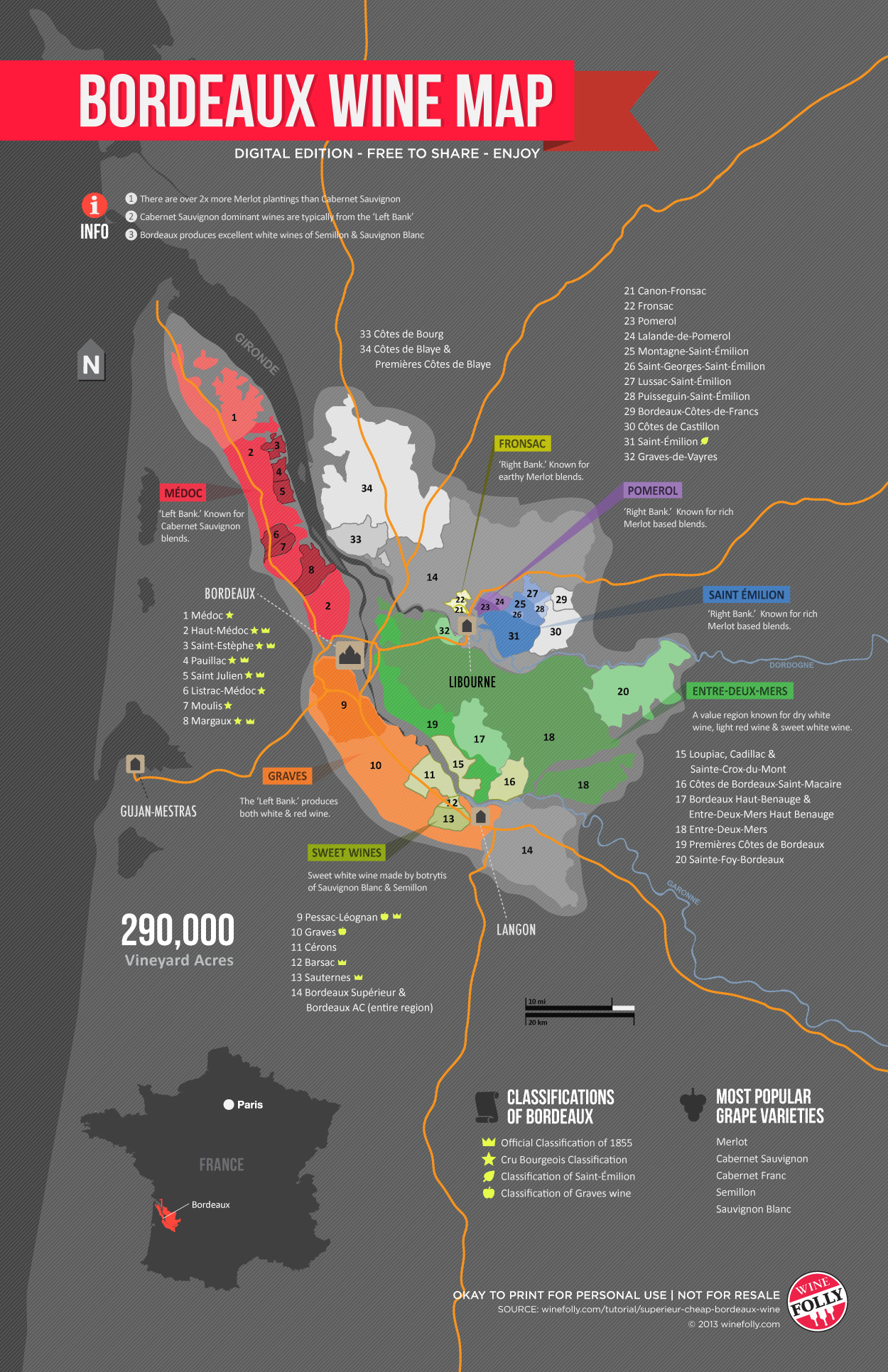Bordeaux - Left and Right Bank
Bordeaux is the world’s largest area specializing in fine wines. Bordeaux wines are grown in the Gironde department, named after the river’s estuary. The most significant red wine regions include Médoc to the north of Bordeaux and the best part of Graves with Pessac-Léognan on the “left” bank, while St-Emilion and Pomerol are on the “right” bank of the Dordogne River.
The fame of the Bordeaux region lies in its noble red wines, which have become a global model for Cabernet and Merlot blends, and in the small quantity of golden-yellow sweet, long-aging essences from Sauternes, as well as some white wines from Graves.
However, not every wine from Bordeaux is automatically a magnificent beverage, as the region is too vast. The exact location, soil, vineyard care, and the winemaker’s skill determine the quality of the wine produced.
Bordeaux is geographically divided into appellations, which are growing areas containing many châteaux—sometimes real castles, though often simple rural estates with wine cellars.
In 1855, the now-legendary Bordeaux Classification was established in the famous Médoc region. This classification became a historic milestone in wine evaluation. Merchants of Bordeaux wines divided the châteaux into five categories—from first to fifth cru—creating the most significant rating system for a specific agricultural product.
This classification helped assess individual vineyards and reveal their potential. However, today’s wine quality often does not align with historical rankings, which may be due to inconsistent vineyard care or efforts by winemakers to improve their products. Additionally, vineyard areas often change or are reallocated, so vineyards belonging to one estate may be scattered among different parcels under various ownerships.
Top-tier wineries produce up to 200,000 bottles of their main wine annually, known as grand vin, which sells for twice the price of wines from lower categories. There is also a second wine, made from grapes that don’t meet the highest standards, though these wines can still be of high quality.
Bordeaux provides ideal conditions for viticulture due to its stable, mild climate, proximity to the sea, and dense network of rivers. Although wine quality in this region varies greatly depending on the season, natural conditions, and soil, Bordeaux remains one of the world’s most important sources of fine wines.
Grape varieties like Merlot, Cabernet Sauvignon, Cabernet Franc, and others are the most common in Bordeaux, and their blends vary by location, tradition, and trends. This variability in grape cultivation and vineyard care contributes to significant differences among the region's wineries.
If you want to compare red wines from renowned châteaux to sample the difference between the "right" and "left" banks of the Gironde River, try wines from Château Cantemerle on the "right" bank. This winery was one of the first estates classified as grand cru classé in 1855. For an ideal "left" bank winery, consider Château Beau-Séjour Bécot, which also holds grand cru classé status.

